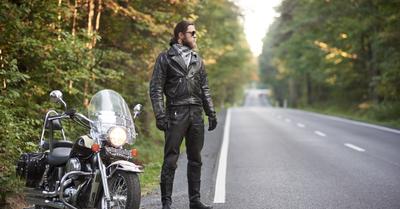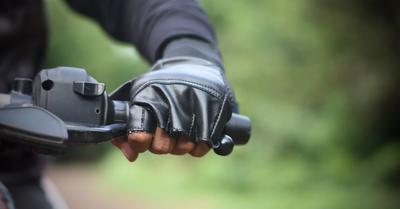What is Horsepower?
Technically, 745 watts or 550 pounds moved one foot in one second is one horsepower or you can just divide the CCs by 15.
Torque and horsepower are completely different. In basketball, the quicker player (torque) has the advantage, not the fastest (horsepower). That ankle-breaking crossover will get you to the bucket no matter how track-star fast the defender is.
One formula for finding horsepower is the torque x RPM / 5252. So, in simple terms, horsepower is the ability to maintain powerful torque at high RPMs, and torque is a measurement of force within the engine, specifically the flywheel. Horsepower measures the energy of the engine applied to the back wheel of the bike, and torque is the measurement of the engine’s rotational power.
Horsepower is simple physics. The more space you are compressing inside of a piston valve, the more torque you will have as well as engine efficiency. The smaller the space, the faster the pistons will move, and thus, higher RPMs. Gear shifting through these compressions will result in a high speed at high RPMs.
Harleys are a big bore, long-stroke engine averaging around 4 inches of piston valve space meaning the piston must travel eight inches every revolution. At the same RPMs as a shorter piston of 2 inches, the Harley engine would create massive amounts of unsustainable friction and heat.
So make no mistake, Harley owners aren’t interested in crotch rocket horsepower made for top speeds on the track; they want low-revving, smooth torque-accelerated power which is usually found in the 50-80 horsepower range. That number looks wimpy compared to smaller-engined, higher-revving speed-demons on the track, but Harley’s aren’t meant to ride at high RPMs.
Acceleration and torque power from idle isn’t seen in the horsepower, so Harley dealers bury that number in their specs on the showroom floor. However, times are changing. Some Harley-Davidson diehards are starting to shift their attention to the track and want HD to come along for the ride. But for you to understand the Harley tradition of big-bore engines with high torque and midrange horsepower, you need a historical perspective.
The History of Harley Davidson Horsepower
From their first low-tech, high-quality single-cylinder engine attached to a bicycle, the 1903 Einzylinder Motor was known for durability and reliability. Harley Davidson never wavered from the point of that first engine in its rich history.
In 1909 they introduced the V-Twin engine, and two years later, the 24-horsepower F-head with a camshaft that moved an intake valve via a push rod. From 1936-1947, it was the Knucklehead which had overhead valves and 48 horsepower. Next was the 60 HP Panhead (1948-1965), the sporty 30 HP K-Model (1952-1956), and then the Sportster series cast-iron Ironhead (1957-1984), which was the father of the Sportster series. From 1984-1999, the Sporster Evolution was more fuel-efficient with more torque and ranged from 46 HP to 67 HP. This was one of the least expensive engines Harley-Davidson produced.
The 65 HP Shovelhead came out in 1966 and lasted until 1984 and had higher compression pistons, with a newly designed carburetor and a new camshaft. It was the last engine developed without a computer in the design. From 1999-2016 the Twin Cam set a new standard in horsepower topping out at 97. But from 2001 through 2017, the water-cooled Revolution (developed with Porsche) had between 117 and 124 HP.
In 2017, all touring models (and in 2018 all Softails) were equipped with the Milwaukee-eight engine. They doubled the valve cylinders to four each which increased gas flow up to 50%. The improvements continue with 10% more torque and 11% more fuel-efficient. It is lighter, quieter, and has less exhaust. The horsepower depends on the engine size (107, 114, or 117) and is between 67 - 78.
The point is that throughout the history of the Harley, they chose stability, torque, durability, and comfortable cruising over high RPM horsepower speed. This led to a cool stigma of leather and chrome and, of course, that unmistakable bass staccato sound that has become an American icon.
So when the newbie motorcycle hobbyist begins mulling over his Harley vs. Honda options and starts asking about horsepower, the answer is usually an eye roll. It just doesn’t matter to the touring biker who cruises between small towns every weekend. You’ll still get that adrenaline pump from idle to the local speed limit every time. Those interested in private road or track riding at hyper-max speeds are not the normal Harley client.
Or are they?
The New Harley-Davidson Horsepower-Happy Design
The times they are-a-changing. More and more people are being mesmerized by the high horsepower speed of the track-worthy sports bikes. Whether it's watching the Isle of Man TT races or the new Top Gun Maverick movie, the need for speed is becoming an addiction. So is it possible that Harley-Davison will respond to this ever-growing clientele?
Two new bikes are catering to this younger generation of high-speed enthusiasts.
Screamin’ Eagle 131
Enter the Screamin’ Eagle 131. It is Harley-Davidson’s newest and biggest engine with 121 horsepower. The 2147CC V-Twin Milwaukee-Eight is still street-compliant and designed with more torque and more high RPM power. The 4.31-inch bore cylinders have a new design as well which optimizes efficiency, airflow, and fuel flow (5.5 grams per second.)
These “Milwaukee-Eight Extreme Ported” quad-valve cylinder heads have a completely new, patented design fitted with 1mm larger diameter valves creating more torque than they’ve ever seen. The high-lift SE8-517 camshaft is high-compression (10.7:1) with a 64mm throttle body and intake manifold. This will produce 131 miles-per-gallon of torque when paired with the Screamin’ Eagle Street Cannon mufflers.
Sportster S
According to HD’s VP of Styling and Design, Brad Richards, there was an internal struggle within the company as to whether they would deviate too far from their roots. In the end, they felt they had the consumer’s permission to “branch out.” And branch out they did. Not only is the Screamin’ Eagle outside the norm of the low-revving big bore engine, but now it’s the Sportster S making the old guard squirm just a little.
The 45-degree V angle engine, the air cooling system, the pushrods … all upended by the upstart Sportster S with its 60-degree, liquid cooling, four valves per cylinder, hydraulic lash valve adjusters, and the 120 horsepower at 7,500 RPMs and 94 pound-feet of torque.
Many are comparing it to when the original Sportster of 1957 which took the place of the side-valved K-model. The revolutionary concept of high-revving speed on a Harley is too much for some. But others believe that the Harley-Davidson name is still well-represented with this new generation. It’s certainly not akin to the lighter, small-engine foreign speedsters that go through tires in a weekend, and no one will mistake it for a crotch rocket. So, yes, it is possible for Harley to branch out into a higher RPM horsepower engine without losing its brand. The slick stylings, high-quality complex engine, low bass sound, and good torque ratios are not compromised with the newer-generation machines being produced by Harley-Davidson.















